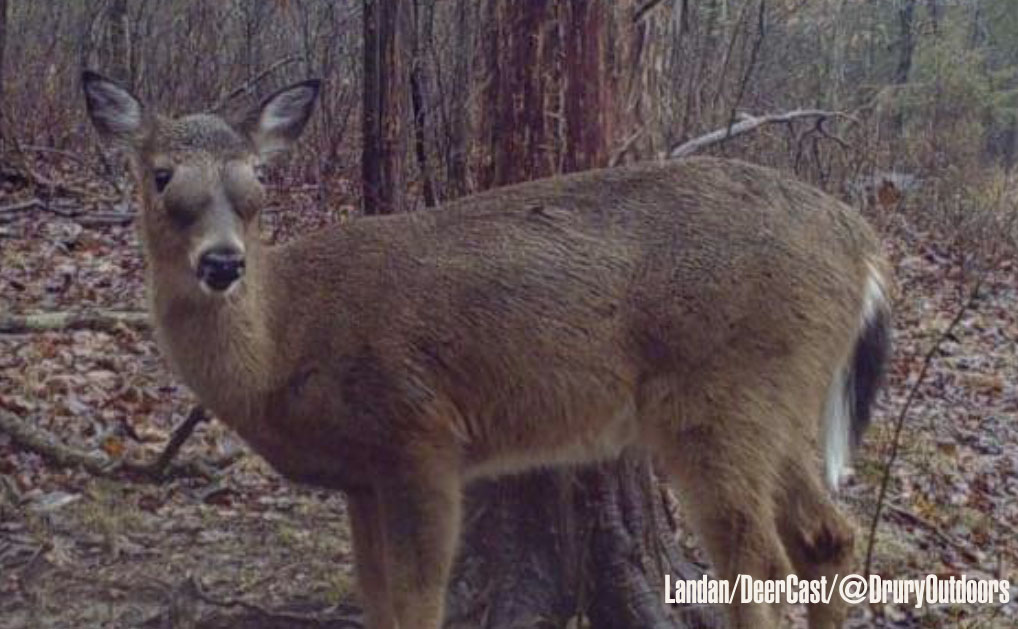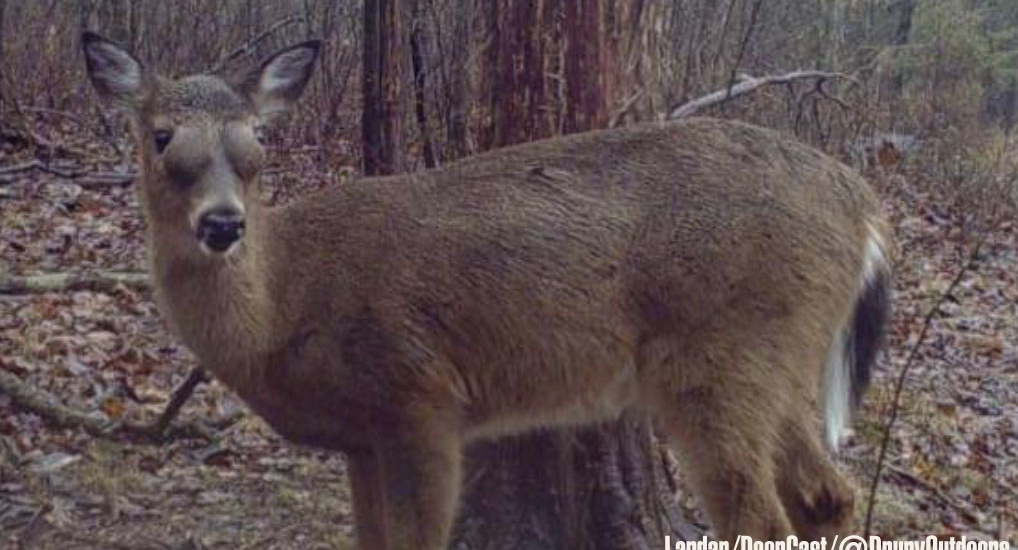We have seen a lot of weird whitetail ailments over the years here at Deer & Deer Hunting, but this deer with matching bulging eyes is a first.

The symmetrical condition of this deer’s bulging eyes has whitetail experts and whitetail researchers stumped. (photo courtesy of Landan/DeerCast/Drury Outdoors)
The photo of the deer with bulging eyes first appeared and went viral when Drury Outdoors posted it on social media after a member shared it on their DeerCast app. We do not know the state where this deer was/is living, but we were immediately curious as to its condition. There’s lots of speculation out there (more than 1,700 fan comments on the Drury Outdoors page), so I turned to our go-to team at the Deer Laboratory at Auburn University.
This group of researchers includes Auburn University researchers Drs. Sarah Zohdy and Thomas Passler, who are associated with longtime D&DH contributor Dr. Stephen S. Ditchkoff. Zohdy is an assistant professor with a joint appointment in the School of Forestry and Wildlife Sciences and in the Department of Pathobiology in the College of Veterinary Medicine. Passler is an associate professor in the Department of Clinical Sciences in the College of Veterinary Medicine.
Related: Mysterious Deer Deaths in Pennsylvania
Related: How Injuries Affect Antler Growth
Related: What Causes Bizarre Growths on Whitetails
Based off of the just the one photo, Drs. Zohdy and Passler provided two possible scenarios for the deer with bulging eyes:
1. Arterial Worms
These worms (Elaeophora schneideri) are often the cause of elaeophorosis, aka “filarial dermatitis” or “sorehead” in sheep; or “clear-eyed” blindness in deer and elk. The worm itself is a nematode that infests several mammalian hosts in North America. It is transmitted by horse fly bites. Infection, however, seldom produces clinical symptoms, hence the speculation that it “might” be a cause in this situation.
“This could be the case, but they are so symmetrical,” Zohdy noted.
2. Glandular Infection
“Sarah’s idea of the artery worm is a very good possibility,” Passler noted. “However, yes, the symmetry of the swelling suggests that this likely is a congenital condition and young age. My first thought was that this may be an infection of the scent glands, which is another possibility.”
Final Analysis
Despite the bizarre condition, both researchers agreed the condition would likely not cause this whitetail long-term problems.
“The good body condition and lack of eye or skin involvement suggest that whatever this is doesn’t affect the animal and should not cause any concern,” Passler noted.
EDITOR’S NOTE: D&DH has an exclusive content partnership with the Deer Laboratory at Auburn University. These articles, columns and more are included in each issue of the magazine. To subscribe to DDH, click here.
MORE: INFORMATION ON THE DRURY OUTDOORS DEERCAST APP.
RELATED: NASTY GROWTHS ON DEER ARE USUALLY NOT LETHAL
— — — —
The Auburn University School of Forestry and Wildlife Sciences is the region’s flagship program for forestry, wildlife, and natural resources and the backbone to Alabama’s $22 billion forestry and wildlife industry. Its mission is to create future professionals and leaders, to develop new knowledge and science based solutions, and share them with individuals, communities, and industries. More information about Auburn University’s Deer Lab research program can be found at auburn.edu/deerlab.
[embedded content]


